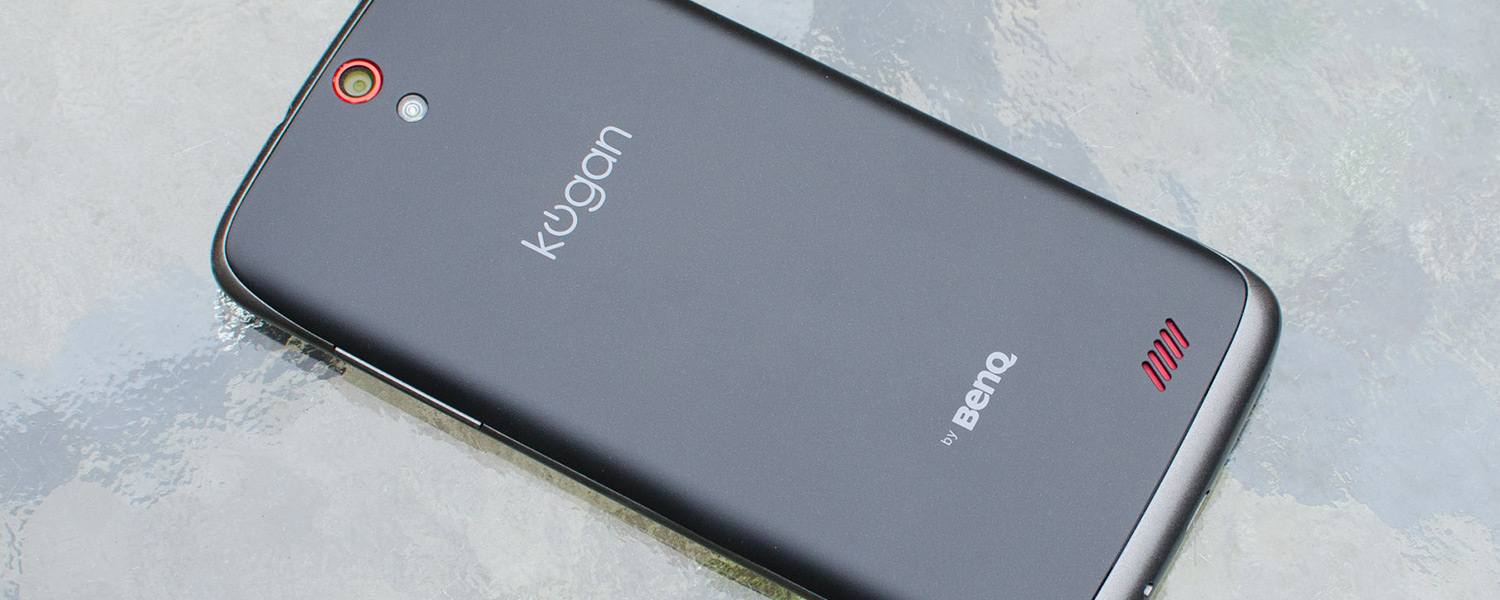Software, Camera
The Kogan Agora 4G runs a near-stock Android 4.4.2 out of the box, which is fantastic news for those who like the vanilla experience. I say "near-stock" because there are a few modifications that BenQ has made for this particular smartphone, though none are significant enough to greatly alter the experience.

One such change is a greatly expanded selection of quick setting toggles, which adds numerous options such as a flashlight, reboot options, network mode toggles and screen timeout buttons added to the stock menu. Most of these options are minor additions, but useful nonetheless for people who frequently head into the settings section.
In said settings section, BenQ has added a few options to the stock offering. A few gestures have been added, such as the ability to flip over the phone to silence an incoming call. There are also a few new battery saving options, which I'll discuss later on. Again, nothing major, just a few handy additions to a largely vanilla KitKat experience.

It does appear, however, that the stock Android package is lacking a little bit of polish. The battery percentage indicator you can enable in the settings is sloppily added to the status bar (it's a slightly different color to the other icons), and there are a few bugs with messaging. One of the bugs keeps SMS notifications in the notification pane after you've read the message, for example.
Also, I feel fairly confident in saying that the Agora 4G won't be upgraded to Android L in the future. Kogan has given no indication that this smartphone will receive updates beyond KitKat, and smaller manufacturers like this don't have a great track record of updates. What you see out of the box is likely what you'll be using for the entirety of the time it's in your hands, so keep that in mind.
Camera
Looking through the firmware of the Agora 4G reveals that BenQ was testing a number of different cameras for the handset, ultimately ending up with OmniVision's OV8865 CMOS for the rear sensor. It's an 8-megapixel 1/3.2" unit with 1.4 µm pixels, paired with a 29mm-effective lens. Oddly, this device doesn't report its aperture size, and there's no information available about what we're dealing with. Based on the images it produces, I'd estimate the f-number is around f/2.4 or f/2.6.
The front sensor is OmniVision's OV2685, which is a 2-megapixel 1/5" unit with 1.75 µm pixels. It doesn't quite have enough pixels to record 1080p video, whereas the rear-facing camera is more than capable of this feat.
I was pleasantly surprised by the quality of the Agora 4G's camera. Typically in this price bracket you're faced with an underwhelming shooter, and OmniVision's silicon hasn't impressed me in the past. This device, however, delivers in most conditions, outperforming its similarly-priced competition.
Whether it's sunny, cloudy or indoors, the color quality and saturation is quite good from the Agora 4G's CMOS. Images are vibrant and appear accurate even when lighting isn't so great, with accurate white balance and great metering ensuring the photos captured are well exposed. Dynamic range is decidedly mid-range, which is to be expected, although switching to HDR mode can capture a greater level of detail in shadowy areas.
With good color performance across the board and a mid-range camera sensor, there has to be some sort of compromise. That compromise is grain: the Agora 4G captures noticeably grainy images in moderate to low lighting. Any conditions that require above ISO 400 will be grainy even while downscaled, as the camera firmware does not apply any noise reduction filters before the image is saved.
This is both good and bad. It's good in the sense that images are, for the most part, extremely sharp, especially in strong lighting where you don't have to deal with grain. Zooming in reveals a decent level of detail for a mid-range camera, even at just 8-megapixels in size. On the other hand it's bad because the grain is so obvious, not something you'd have to deal with in a flagship camera system.
One way to fix the grain issue is to enable the Denoise camera mode. This mode applies some serious noise reduction filters, which in turn reduces detail and isn't suitable for strong lighting. However for those extremely grainy shots, Denoise does exactly what it says: it reduces noise and produces a mostly clean image. Just don't zoom in, because it's artefacts galore.
Photos aren't always sharp without using the noise reduction mode though, with the Agora 4G resorting to shutter speeds as low as 1/8th of a second at night. Without OIS, photos can be blurry if you aren't a master of holding your phone steady. Results aren't that amazing either, as the camera system doesn't use an ISO lower than 1000 (which is grainy enough as it is), which isn't enough to produce usable photos in dark night-time conditions.
Most of the camera's features aren't anything special. There is a decent range of settings you can apply to override the defaults, and a few basic shootings modes such as burst shot, panorama and HDR. AS always, I'd suggest switching from shooting at a 16:9 aspect ratio to 4:3 so that you access the full sensor for your images.
The rear sensor on the Agora 4G captures 1080p/30 video at 20 Mbps in Baseline profile H.264, with 96 kbps dual-channel audio. Video quality is quite good, not as sharp as I've seen from other smartphones at 1080p, but definitely serviceable. The microphones on the Agora appear to be particularly sensitive to high-frequency audio, though again audio quality will suffice from this mid-range handset.











